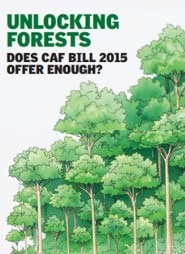The Ministry of Environment, Forest and Climate Change (MoEF&CC) has been entrusted with preserving and improving the forest wealth of the country in the interest of its citizens and national ecological security. The rising demand for forestland for non-forestry purposes, such as mining, hydropower and infrastructure development, has caused MoEF&CC to divert millions of hectares of rich forests. In order to reduce forest cover losses, the Supreme
Court of India directed the Central government in 2002 to constitute the Compensatory Afforestation Fund Management and Planning Authority (CAMPA).
As a temporary arrangement, the Ad hoc CAMPA was constituted in 2006 to utilize CAMPA funds by taking up afforestation and conservation activities as a way of compensating for forestland diversions for non-forest uses.
Despite the Supreme Court’s direction in 2002 to create a Compensatory Afforestation Fund (CAF), in which all the monies received from user agencies towards compensatory afforestation, net present value, catchment area treatment plan etc. were required to be deposited, such monies continue to be deposited in the Ad hoc CAMPA. Evidently, the money so accrued was haphazardly spent partially by the governments, as pointed out in CAG Report (21 of 2013), while a major chunk of these funds lie idle in various accounts opened in banks for the purpose. In view of the accumulation of massive wealth, to the tune of Rs 42,000 crore, the Centre is now contemplating unlocking this money by creating national and state-level CAFs under public accounts of India by enacting the CAF Bill 2015.
While the CAF Bill, 2015 is a progressive move to streamline the CAMPA process and utilize the massive funds accrued for afforestation activities, there are several inherent threats and opportunities involved. We find that the CAF Bill in its present shape does not address many issues in the Indian forest sector, such as involvement of communities in afforestation and monitoring of compensatory afforestation to ensure survival, forest rights and synergies with other forestry programmes. It is important that the government urgently addresses these
issues in the context of our renewed climate change commitments and need to increase productivity and livelihood opportunities in the forestry sector.










